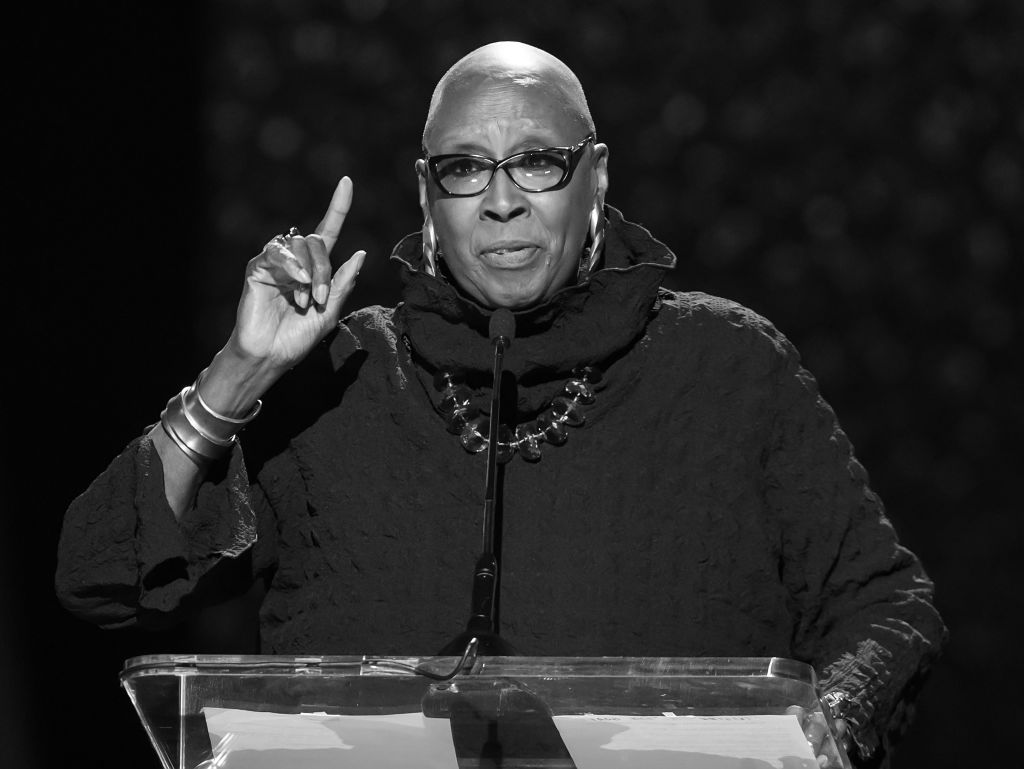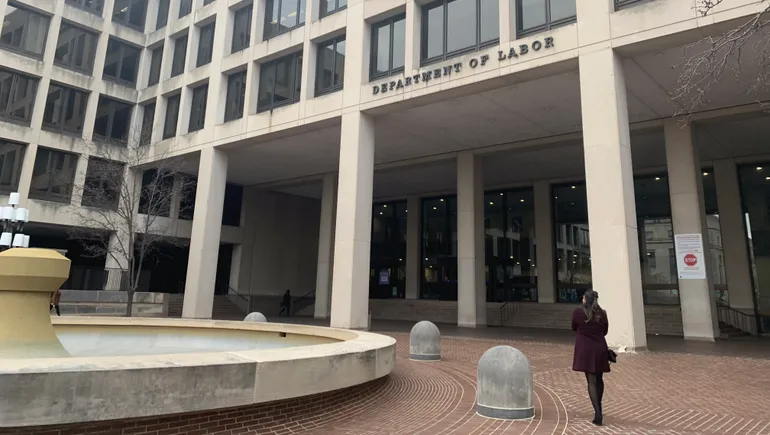For as long as she could remember, Tonja Myles had thoughts of suicide. After a childhood of sexual abuse, Myles turned to drugs and prostitution to “mask the pain,” and twice she overdosed on prescription pills. After recovery, she worked as an advocate for improving mental-health care in her home city of Baton Rouge, La., by sharing her story and working with others who had suffered trauma and struggled with mental illness.
But in 2016, she had her own mental-health crisis. She wrote a note to her family, collected some pills, and drove to a secluded place, where she planned to end her life.
Her family found the note and persuaded her to return home. Concerned, they had already called 911—the only option they had for such an emergency—and the dispatcher sent police, since she had threatened to harm herself. Seeing police at her home, Myles became more agitated, especially after one of the two officers began treating her “like a criminal,” she says. She contemplated provoking him so that he would pull a gun and end her life on the spot.
But the other responding officer was trained in crisis intervention, a strategy for treating mental-health emergencies as matters of public health rather than public safety. He recognized Myles from her presentations to local law enforcement on crisis intervention and began calmly engaging with her about her work. He offered to take her to a hospital, and she agreed.
Myles was committed for a week at a mental-health facility, where she began therapy and confronted, for the first time, the cause of her suicidal thoughts. She was diagnosed with PTSD from past childhood sexual trauma. “When the pain finally had a name,” she says, ‘I felt, ‘Tonja, you are not crazy, you are not weak. You were wounded.’”
Myles avoided a trip to jail in 2016 because one of the responding officers had been trained in crisis intervention. But even six years later, such a positive outcome from an emergency mental-health call is the exception rather than the norm in the U.S. Even though emergency response systems for medical, public safety, and fire crises are well-coordinated and integrated in nearly every community through 911, the same isn’t true for behavioral health or mental-health crises. The National Suicide Prevention Lifeline is the closest thing the U.S. has to a mental-health hotline, yet it operates only about 200 unevenly distributed, underfunded call centers.
Until now. On July 16, the federal government will phase out the Lifeline’s clunky number —800-273-8255—and launch a new three-digit number, 988, for anyone in a mental-health crisis. The 988 Suicide and Crisis Lifeline will dramatically expand the capacity of call centers to answer calls, with the goal of instantaneously connecting people suffering mental-health crises to mental-health professionals—instead of police officers or EMTs, not all of whom are not trained to or comfortable de-escalating emergency situations involving mental illness.
When a person calls 988, a certified counselor at a call center, ideally located near that person, will guide them through the crisis in the majority of cases and, when more help is needed, send a mobile crisis team made up of mental-health experts and peer-support counselors. If those interventions aren’t sufficient, 988 will also direct people to stabilization facilities—mental-health facilities where trained staff can observe and provide additional counseling and support—or residential facilities for longer term care. Those settings are more appropriate for people with mental-health crises than where they currently end up — in the emergency room, jail, or, in worst cases, the morgue where if the incident escalates into deadly violence. “988 represents probably the most potentially transformative federal legislation in mental health that we’ve seen in decades,” says Dr. Ashwin Vasan, New York City health commissioner.
But there are massive hurdles to turning that vision into reality. 988 will require building a compassionate crisis response system in a country that has historically underfunded and dismissed mental-health services. Funding, staffing, and insurance reimbursements will all be a struggle. “We are sitting in the context of a system that is fragmented and frankly has a lot of gaps in terms of providing services for individuals,” says John Palmieri, director of 988 and behavioral health crisis at the Substance Abuse and Mental Health Services Administration (SAMHSA) within the U.S. Department of Health and Human Services, which funds the Lifeline and is helping states implement 988. While people who work in the mental-health field are optimistic about the potential 988 represents, hardly anyone—not even Palmieri—expects the system will work seamlessly at the outset.
Read More: How 988 Will Transform America’s Approach to Mental Health
Still, 988’s launch is a landmark moment. The new crisis line represents the first major investment—$432 million from the federal government—in mental-health services in the country in decades, and it couldn’t come at a more crucial time. Mental-health struggles among Americans have reached unprecedented levels due to the pandemic and the widespread anxiety, depression, and emotional stressors that have resulted from lockdowns, disease, and job losses. Depression and anxiety among adults in the U.S. were four times higher between April 2020 and August 2021 than they were in 2019; every 11 minutes, an American died by suicide in 2020. Rates of depression and anxiety are rising especially quickly among teens. Mental-health professionals are struggling to keep up with the wave of demand.
“After the pandemic started, it’s been significantly harder to connect people with [mental-health] providers who don’t have wait lists, and emergency department and psychiatric units are overflowing with people needing help,” says Shelby Zurick Beasley, associate director of crisis services at Provident Behavioral Health, a nonprofit community mental-health center in St. Louis. “That’s where 988 comes in. There may be a wait list for counseling, but if you’re in a crisis, you can reach out and talk to someone right now.”
If the stars align, 988 has transformative potential, says Dr. Margie Balfour, chief clinical quality officer at Connections Health Solutions, a nonprofit provider of behavioral health services in Tucson, Ariz. “This is mental-health crisis care’s carpe diem moment.”
Answering the call
Since it began in 2004, the National Suicide Prevention Lifeline network has provided critical support in de-escalating urgent mental and behavioral health incidents. A 2018 study of Lifeline callers who were interviewed anonymously found that 80% said follow-up calls from counselors made them feel supported and diverted them from carrying out suicide plans. But even as the number of calls grew, a lack of funding prevented it from expanding.
In 2018, Congress passed the National Suicide Hotline Improvement Act to explore a three-digit, easy-to-remember hotline number. And in 2020, the Federal Communications Commission designated 988 as the new digits to dial.
The American Rescue Plan of 2021, which was passed to offer emergency funding to address the COVID-19 pandemic, provided $105 million in additional funding for mental-health resources to make the transition to 988 possible. While states reported in spring 2021 that their collective pot for supporting call centers was around $30 million, in the past year, legislatures have committed additional funds and have now allocated $200 million for implementing 988. With money earmarked to address the mental-health needs resulting from the pandemic, states could finally start hiring more people to field phone lines. Recruiting remains a challenge, but more stable funding meant Lifeline centers would no longer have to rely as heavily on volunteers as they had in the past. “Call centers can now pay a living wage, and people can start building career pathways that the field of crisis care never had before,” says John Draper, executive vice president of national networks at Vibrant Emotional Health, which operates the network of Lifeline call centers.
The reality is, however, that as Myles’ family did, most people are used to dialing a different trio of numbers in case of emergencies of any type. “Most of the country still relies on 911 to manage mental-health crises,” says New York City health commissioner Vasan. “That’s not because they are sure they will get the response they need, but because they don’t have an alternative.”
And once contacted, 911 operators typically have no other choice but to dispatch police or paramedics or EMTs to people in mental distress. And those responders in turn generally have few options once they get there, including delivering the agitated person to an emergency room or jail if they pose a threat to themselves or others.
Read More: Suicide Is Preventable. Hospitals and Doctors Are Finally Catching Up
When law enforcement tries to manage agitated people in the same way as they do people who endanger public safety, the episode often escalates, says Matt Kudish, executive director at the National Alliance on Mental Illness (NAMI) New York City Metro. Since 2015, nearly 20 people in mental distress were shot and killed by police responding to the incidents in New York City. Managing mental health crises, he notes, involves more specialized training in active listening and empathy that mental-health professionals are more comfortable using.
Engaging trained professionals—plus peer support counselors, who can provide empathy from having experienced their own mental-health struggles—results in less collateral damage and better long-term outcomes. In a 2022 study of a pilot program in Denver in which civilian, health, and social work professionals—rather than police—responded to mental-health and substance-use calls, less serious crimes such as public disorder dropped by 34%. This suggests that the more targeted team was a better match for handling the crisis than law enforcement.
In June 2021, New York City began testing an experimental program that sends an unarmed mobile team consisting of a social worker, peer counselor, and EMT to address mental-health calls in Harlem and the Bronx. The team has responded to more than 2,400 calls so far, and produced encouraging results. When 911 responded to mental-health calls from January to March 2022, 87% of people involved were dropped off at hospital emergency rooms. But the mental health-crisis response team only transported 59% of its cases to the ER. They were also able to provide a broader range of services, including on-site counseling and referrals to follow-up care in the person’s community.
Such mobile crisis teams are not standard in every city, although once 988 launches, SAMHSA is hoping more states put them in place. In Los Angeles County, which operates the largest public mental-health services system in the country, mobile crisis teams have not operated 24/7. But with additional funding from 988, in coming weeks it will, says Connie Draxler, acting chief deputy director for the Los Angeles County Department of Mental Health.
Part of the 988 plan is to also train 911 dispatchers to recognize and route mental-health emergencies to 988, where trained professionals can take over. That’s what currently happens in Arizona, a state that’s become a model for what mental-health crisis response should look like. It recently conducted a pilot of a call diversion similar to New York City’s with its local 911 system in the Phoenix area. Since 2018, about 1,500 calls each month have been transferred from calls into the Phoenix Police Department’s 911 to the area’s mental-health crisis line. About half are stabilized without additional resources needed, and the other half are resolved by sending mobile crisis teams—professionals that respond to mental-health emergencies, similar to 911’s first responders.
In Tucson, the system is even more refined. The city copied a strategy originally piloted in Houston and Austin, in which behavioral health clinicians are embedded in 911 call centers to help 911 dispatchers determine if a caller needs to be connected to the crisis help line, or needs a mobile crisis team. “The fire and police departments never see those calls on their board,” says Kevin Hall, assistant chief of the Tucson police department. “We’re hoping to expand on that with greater coordination and integration of 988 and 911 to transform 911.”
Busy signals
Most states, however, aren’t prepared to activate 988 call centers at the capacity that’s needed. Vibrant estimates that the volume of calls to the 988 Lifeline will increase by 50% in the crisis line’s first year, but current capacity is already strained. As many as 17% of callers over the past year have hung up after failing to connect with anyone within the first 30 seconds, according to Vibrant. When local call centers are too busy to pick up, the call is routed to a national backup center, and the wait times for those lines can be even longer because of their increased call load.
988’s rollout includes provisions to help guard against that happening. SAMHSA and Vibrant have provided states with minimum quality standards, such as answering 90% of calls in the first 30 seconds and answering 90% of them locally, without having to rely on the national backup centers. Yet in a survey conducted by RAND Health Care in June, only 16% of state and local mental-health program directors said they had received adequate funding to support their states’ 988 plans.
That’s not exactly encouraging, since 988 is also adding other ways to get in touch. The 988 Lifeline will support text and chat, but about 60% of states don’t yet have the technological capacity to provide robust services across all three platforms, the RAND survey found. Boosting those capabilities will be important to reach younger people, who increasingly shoulder a larger burden of mental-health issues in the country. At the Crisis Text line, a national nonprofit provider of mental help support via text, 70% of users are under age 25, and 50% are under 18 years old. “[Texting] allows anyone to have access to counseling in a moment that’s convenient for them, in an anonymous and confidential way, if they don’t want to have a conversation on the phone with a parent or guardian or someone who is bullying them present,” says Courtney Hunter, Crisis Text Line’s vice president of policy and advocacy.
Read More: Telehealth Companies Push for Permanent Expansion
Mental-health advocates also know that reaching 988 is only the first step. While counselors can de-escalate about 90% of emergencies by phone, according to Vibrant’s data, that doesn’t mean the person’s mental-health issues have been resolved. Connecting people to follow-up care is crucial to making the system effective. “We know the safety net is riddled with holes, and people are falling through that net every single day, whether they end up on the street or in jail,” says NAMI’s Kudish. “It isn’t just about the crisis response, but about what happens next, and afterward. How do you sustain a person’s wellness? Who supports this individual’s recovery in a meaningful way?”
Many states don’t have the mental-health infrastructure in place to follow-up offline. Montana’s three call centers, for example, are highly efficient at answering phone lines. But only a few mobile crisis teams cover the entire state, much of which is remote and rural, and there are only a couple of facilities where people in need of more sustained care can be referred. “It’s an example where the state is ready in terms of meeting contacts that will come through 988,” says Matt Taylor, director of network development at the National Suicide Prevention Lifeline, who has been tracking state readiness for 988. “But the crisis continuum of services has a long way to go.” Another technological problem 988 hasn’t addressed yet: the system cannot geolocate callers, as 911 does, so resources are provided based on the caller’s area code, despite the fact that many people no longer live where they originally registered for a number.
Ideally, the 988 counselor should connect the person who reaches out back to their own doctor or therapist, or to a local one if they don’t have a mental-health care provider. People should leave the encounter with a list of community mental-health clinics that can provide same-day or next-day appointments. “That call to 988 is the front door to the rest of crisis services,” says Laura Evans, director of national and state policy at Vibrant. That’s harder if the connection isn’t local, which is why the 988 rollout is emphasizing building up local call center capacity so fewer calls are routed to national backup centers.
Tough numbers
While many psychologists and community-based facilities are interested in partnering with 988, they face formidable logistical and financial barriers. Mental-health professionals are already overbooked, and people in crisis need timely follow-up appointments. To make that happen, in Missouri, 988 call centers are planning to link with OpenBeds, an online system for tracking immediately available behavioral health services, so counselors can quickly connect callers to outpatient or inpatient care.
Reimbursement for such services is also a major issue. Currently, not all insurers cover mental-health crisis services. The hope is that once people start calling 988, legislators will be aware of how much their states are subsidizing and start demanding more parity in coverage from commercial insurers, says Kevin Ann Huckshorn, a registered nurse with RI International, a nonprofit that operates a network of mental-health facilities across the country.
The economic barriers are even higher if 988 counselors feel the person in crisis needs immediate in-person support. Mobile crisis teams require investment to build and maintain. Only Medicaid currently reimburses for such crisis services; Medicare and commercial insurers do not, which means that states must subsidize mobile teams even for people who are insured.
Staffing call centers also remains a significant challenge, since funding for services hasn’t always been guaranteed long term. The currently available funding, through SAMHSA grants and the American Rescue Plan, are one-time grants that will run out in a year or two. It’s up to states to build in funding for maintaining 988 centers and any additional mental-health care they provide. Some have begun leveraging dollars available through Medicaid expansion plans or mental-health block grants from the federal government, but those aren’t always sufficient. More continuous forms of funding, such as user fees collected from cell phone users—similar to the fees charged to maintain 911, which generate more than $3 billion annually—are another option. (Virginia is the only state so far to pass legislation to make these charges; others, including Alabama, Nebraska, New York, Oregon, and Texas have created commissions to explore such a charge.) And legislators in Washington state passed a bill to require insurers to cover the cost of crisis-response services.
But in some places, where legislators aren’t stepping up yet, providers are stepping in. In Maryland, psychologists who want to volunteer their time have created a system in which they can be matched with patients who qualify for pro bono treatment, saving them the work of determining people’s eligibility. Other states are exploring models such as the Give an Hour system, in which mental-health professionals volunteer their time and are connected with those in need, including military and veteran personnel.
The future of 988
To illustrate 988’s potential, experts consistently point to Arizona. The state legislature there has devoted funds to maintaining a relatively robust mobile crisis support system; the Phoenix metropolitan area, which includes a population of nearly 5 million, operates 30 teams run by a variety of providers and mental-health facilities. The teams are made up of two people—a counselor or social worker and a peer-support specialist. These teams are reimbursed by the state’s Medicaid regional behavioral health authorities, which are responsible for the crisis-care system in the state. Having those funds allows the state to maintain not only the crisis teams but also a network of care facilities that will accept people for longer term care as well, regardless of their insurance status. “Very few states set themselves up to be reimbursed this way,” says Andrew Erwin, chief operating officer of Solari Crisis and Human Services in Arizona. “That support has allowed us to take on the volume and continuum of services that we provide.”
The mobile teams also provide relief for local law enforcement, who traditionally are responsible for obtaining clearance to admit people to psychiatric facilities. “The officer was left as the street-corner psychiatrist,” says Kevin Hall of the Tucson police department. Officers would have to determine if the person was a danger to themselves or others, and if so, call a psychiatrist to get authorization to bring them to a psychiatric hospital. Once there, the officer was responsible for initiating a petition process to admit the person for court-ordered treatment.
That rarely happens now, says Hall, ever since the Tucson police department partnered with local mental-health facilities to streamline the process. Officers now bring people who can’t be stabilized by mobile teams to a facility run by Connections Health Solutions, which will operate the state’s 988 crisis call centers. Once officers drop patients off at the facility, it takes just 10 minutes for the team to take over their care, wasting no time with insurance questions or extensive paperwork. Mental-health professionals either work with people in a 24-hour observation area or admit them if they need more intensive support. “It’s been wildly successful,” says Hall. “The community likes it, the officers like it, and the behavioral health folks love it.” Connections is reimbursed for their services through Medicaid for covered patients and through the state allocated budget for crisis care for people not covered by Medicaid.
Replicating such investment won’t be possible in every state, but officials from other states have consulted with Arizona’s administrators; Solari is working with Utah and Georgia to establish a network of stabilization facilities in those states that will be reimbursed for any long-term support people calling into 988 might need.
There will be challenges. “Any stress on the 988 system will be readily apparent; we can’t hide it,” says Jamie Sellar, chief strategy officer for RI International. “Everything else is going to have to catch up to it for it to work.” No one expects the system to be at full capacity on July 16, or even by the end of the year.
The key to enhancing 988 services—the call centers, mobile crisis teams, and stabilization facilities—is to secure steady funding, and experts believe that the best way to do that is to generate data proving to budget-conscious legislators that the investment is cost effective in the long run. Shuttling people in mental-health crises through emergency departments or prison is an expensive way to manage them, especially since studies show such strategies lead to people cycling repeatedly from crisis to crisis, which costs the health care and law enforcement systems a lot of money.
“Over time, we will be able to collect data about behavioral health, mental health and substance use and suicide prevention in ways we have never been able to document before,” says Vibrant’s Draper. That will help supporters make evidence-based arguments to state and local officials to continue investing in the system, rather than allowing the services to peter out when the funding does. With a long-term commitment, investments will pay off, supporters believe, because treating the root issues of mental illness will result in fewer expensive mental-health emergencies.
Tonja Myles knows how life-changing a resource like 988 can be. Being treated compassionately by a trained professional during her own emergency saved her life. During her stay at the mental-health facility in 2016, she had a profound realization. “I realized that all the pain I had been carrying, that I thought would die with me if I killed myself, would only transfer to my family and friends,” she says. “And I never want anybody to be in that kind of pain.” As a result of her experience, Myles started therapy and medication for her PTSD. She now works as a pastor and a peer-support specialist, helping others in crisis.
“I never thought I would see anything like 988 happen in my lifetime,” she says. “While it is a call for help, it also has to be a connection to hope.”
More Must-Read Stories From TIME





















Discussion about this post